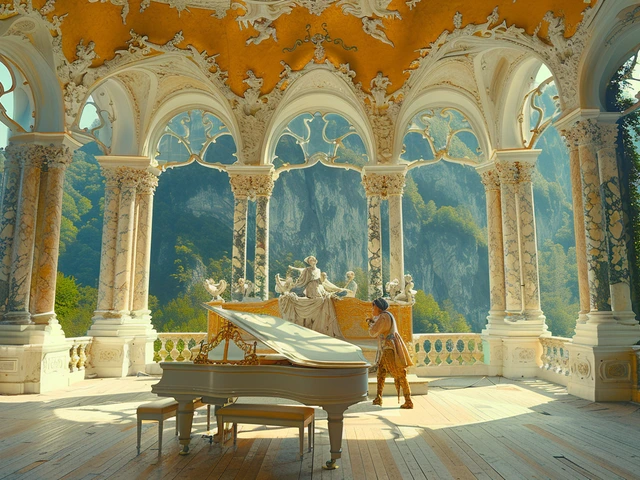The Birth and Ideology of Dadaism
Dadaism emerged amidst the turmoil of World War I, serving not only as an artistic movement but also as a political statement. Artists disillusioned by the war and society's norms sought to reject traditional values in art and culture. Zurich became the cradle of Dada in 1916, welcoming artists, writers, and poets from across war-torn Europe. They congregated in the Cabaret Voltaire, a space where performances, poetry readings, and exhibitions defied conventional forms and content. The essence of Dada was its opposition to the war, bourgeois culture, and a critique of art's role within society.
The movement quickly spread beyond Zurich to other cultural hubs including Berlin, Paris, and New York, each developing its distinct flavor of Dada. Despite its geographical sprawl, a common thread bound Dadaists together: the belief in the absurdity of life and art's potential to reflect this absurdity. Through their artworks, performances, and writings, Dadaists ridiculed the rationalism that had led to the war, advocating for a reality where chaos and irrationality reigned.
Key Figures and Contributions
Pioneers such as Hugo Ball, Tristan Tzara, Marcel Duchamp, and Hanna Höch played crucial roles in shaping Dadaism. Duchamp's ready-mades, objects found and presented as art, questioned the very definition of art. His most controversial piece, 'Fountain' - a urinal submitted to an art exhibition - challenged artistic conventions and provoked the art world. Hanna Höch, through her collage and photomontage techniques, critiqued societal norms, particularly those surrounding gender and politics.
Each figure brought a unique perspective that contributed to Dada's rich, multifaceted character. Their works collectively illustrated that art could transcend traditional mediums, embrace the mundane, and even be born from destruction. Dadaists believed that by breaking down art to its most absurd forms, they could ridicule and criticize the societal values that led to such global unrest.
The Impact of Dadaism on Art and Society
The reverberations of Dadaism were felt not only in the art world but also across society. Art was no longer confined to paintings and sculptures; it became an act, a performance, a political statement. Dadaists' use of nontraditional materials and mediums expanded the boundaries of what could be considered art, laying groundwork for future artistic movements such as Surrealism, Pop Art, and Conceptual Art.
Moreover, Dadaism's emphasis on the idea over the aesthetic of art influenced the development of performance art, installations, and video art. It questioned the purpose and value of art, asserting that art's significance lies in its ability to provoke thought and challenge perceptions rather than in its beauty or craftsmanship. This idea has significantly shaped contemporary art practices, where concept often precedes form.
Legacy and Influence on Modern Art
The legacy of Dadaism extends beyond its immediate aftermath. Contemporary artists draw on Dadaist themes of absurdity, parody, and disruption to critique modern society and culture. The movement's experimental spirit encouraged artists to push boundaries, explore uncharted territories in art, and employ new technologies and media.
Despite its relatively short lifespan, Dada's influence is evident in the work of major 20th and 21st-century artists and movements. Its spirit of innovation and resistance against the status quo continues to inspire artists, reminding them that art possesses the power to change the world, one absurd gesture at a time.
Conclusion: Reflecting on Dadaism's Enduring Relevance
Looking back, Dadaism was not merely an artistic movement; it was a philosophical stance against the backdrop of a world in chaos. By challenging the traditional notions of art and its role in society, Dadaists liberated future generations of artists to explore, critique, and innovate. Today, as we navigate through our own complex societal challenges, the Dadaist call to embrace the absurd, defy conventions, and question the status quo rings truer than ever.
Ultimately, Dadaism taught us that art is boundless, transformative, and, above all, a reflection of the human condition in all its chaotic glory. Its impact on our perception of art is a testament to the power of creativity to confront, challenge, and change the world.




